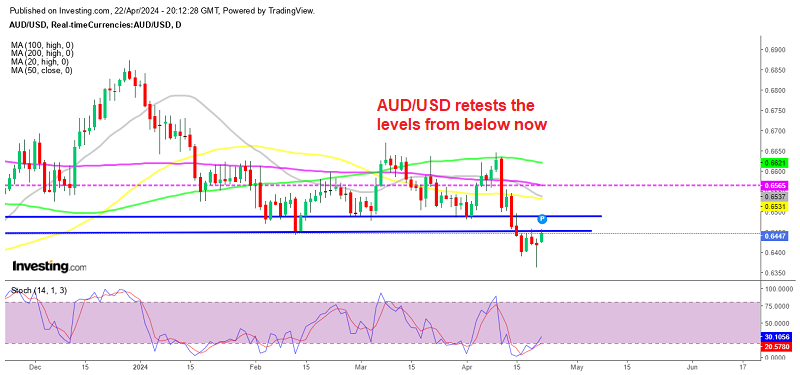
The key data release out of Asia this week is Aussie CPI which has been a key issue for the RBA in recent times.
The expectation is for the level of inflation to be hitting 1.5%, however, that is a long way off the RBA’s target band of 2-3%. The result has also been put into focus given what we heard from RBA Governor Lowe last week.
Lowe suggested we should now be expecting an extended period of low-interest rates, which would suggest he is not predicting inflation to track higher any time soon. Lowe’s plan has of course been to cut interest rates in a bid to prop up the jobs market. When the excess capacity is taken up, he hopes that will lift wages which will, in turn, boost inflation. But as we know, this is a slow process that will play out over months, if not years.
The other concern is that the rising CPI level this month appears to be on the back of higher fuel prices. So that in and of itself is not really a positive development. When we see inflation rising on the back of factors like food and petrol that is never really that much of a strong indicator for the economy.
The AUD is Weak
The AUD/USD has been falling over the last week and that in and of itself, should please Governor Lowe and the RBA. The Aussie has slid away sharply and is now back down to the 0.6900 level. The move has been helped largely by a stronger USD. The Greenback has bounced a fair bit thanks to the fact that the market is starting to predict a less dovish outlook. But we won’t know for sure until later this week when the FOMC meets.
A big change in guidance will have a significant impact on the USD and in turn the AUD/USD, so we could easily see some more downside if Powell turns a bit more hawkish.
For now, we watch the 0.6900 level to see if it can hold. Fundamentally, the Aussie economy is not as strong as the US, based on employment figures and inflation alone and they are clearly the two big indicators at the moment. That should mean the Aussie has a fair bit more room to depreciate in value over the coming months.












